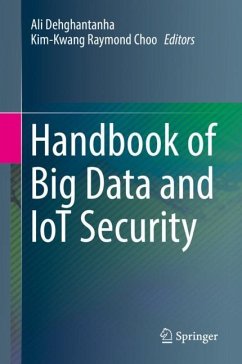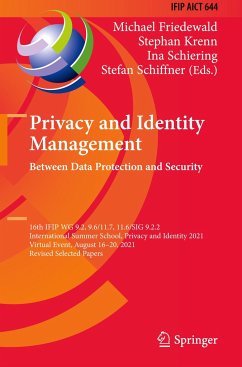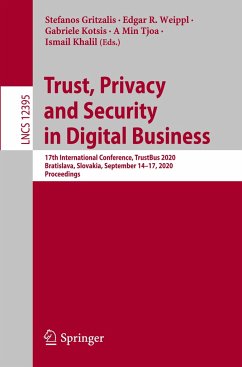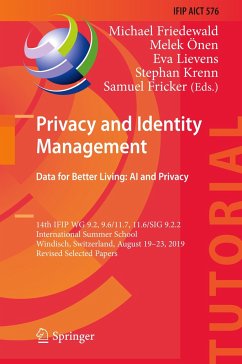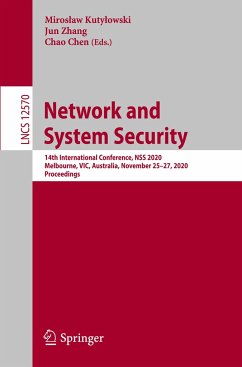
Security Infrastructure Technology for Integrated Utilization of Big Data
Applied to the Living Safety and Medical Fields
Herausgegeben: Miyaji, Atsuko; Mimoto, Tomoaki
Versandkostenfrei!
Versandfertig in 6-10 Tagen
38,99 €
inkl. MwSt.

PAYBACK Punkte
19 °P sammeln!
This open access book describes the technologies needed to construct a secure big data infrastructure that connects data owners, analytical institutions, and user institutions in a circle of trust. It begins by discussing the most relevant technical issues involved in creating safe and privacy-preserving big data distribution platforms, and especially focuses on cryptographic primitives and privacy-preserving techniques, which are essential prerequisites. The book also covers elliptic curve cryptosystems, which offer compact public key cryptosystems; and LWE-based cryptosystems, which are a ty...
This open access book describes the technologies needed to construct a secure big data infrastructure that connects data owners, analytical institutions, and user institutions in a circle of trust. It begins by discussing the most relevant technical issues involved in creating safe and privacy-preserving big data distribution platforms, and especially focuses on cryptographic primitives and privacy-preserving techniques, which are essential prerequisites. The book also covers elliptic curve cryptosystems, which offer compact public key cryptosystems; and LWE-based cryptosystems, which are a type of post-quantum cryptosystem. Since big data distribution platforms require appropriate data handling, the book also describes a privacy-preserving data integration protocol and privacy-preserving classification protocol for secure computation. Furthermore, it introduces an anonymization technique and privacy risk evaluation technique.
This book also describes the latest related findings in both the living safety and medical fields. In the living safety field, to prevent injuries occurring in everyday life, it is necessary to analyze injury data, find problems, and implement suitable measures. But most cases don't include enough information for injury prevention because the necessary data is spread across multiple organizations, and data integration is difficult from a security standpoint. This book introduces a system for solving this problem by applying a method for integrating distributed data securely and introduces applications concerning childhood injury at home and school injury. In the medical field, privacy protection and patient consent management are crucial for all research. The book describes a medical test bed for the secure collection and analysis of electronic medical records distributed among various medical institutions. The system promotes big-data analysis of medical data with a cloud infrastructure and includes various security measures developed in our project to avoid privacy violations.
This book also describes the latest related findings in both the living safety and medical fields. In the living safety field, to prevent injuries occurring in everyday life, it is necessary to analyze injury data, find problems, and implement suitable measures. But most cases don't include enough information for injury prevention because the necessary data is spread across multiple organizations, and data integration is difficult from a security standpoint. This book introduces a system for solving this problem by applying a method for integrating distributed data securely and introduces applications concerning childhood injury at home and school injury. In the medical field, privacy protection and patient consent management are crucial for all research. The book describes a medical test bed for the secure collection and analysis of electronic medical records distributed among various medical institutions. The system promotes big-data analysis of medical data with a cloud infrastructure and includes various security measures developed in our project to avoid privacy violations.






